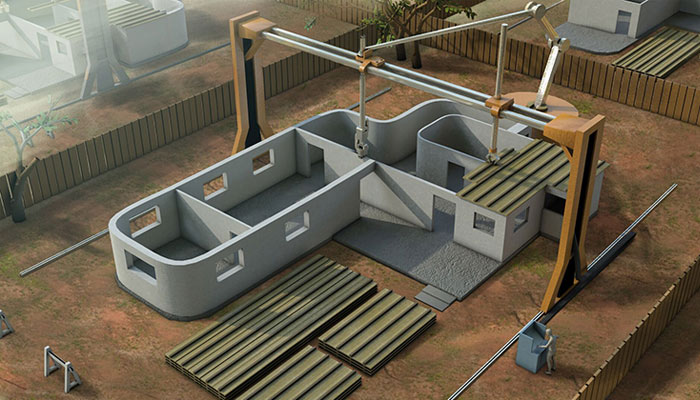As we navigate through the advancing landscape of technology, one breakthrough stands significantly in the sector of building: 3D fabrication. This exceptional technology is transforming the way developments and structures are conceived and assembled, bringing forth a new age of effectiveness, eco-friendliness, and creativity.
Reshaping Construction: One Sheet at a Time
The integration of 3D printing in building presents multiple revolutionary gains. Primary among these is the significant minimization in resource waste. Traditional building methods usually lead in considerable surplus resources that add to ecological waste. In opposition, 3D manufacturing applies a meticulous stratum-by-stratum approach, using only the required portion of resource and thus limiting surplus substantially.
Another compelling benefit is the remarkable decrease in construction period. Undertakings that historically require extended durations can be completed in a portion of the timeline with 3D fabrication innovations. This speed-up is due to the self-operating functionality of 3D devices that can work around the clock without manual intervention, greatly minimizing complete project deadlines.
Moreover, 3D printing opens up possibilities for building sophisticated, personalized designs at no extra cost. The flexibility of 3D devices allows for intricate designs and shapes to be created that would either be highly costly or inconceivable to achieve with traditional building techniques. This capability not only elevates structural beauty but also allows builders to optimize layouts for better functionality and durability.

Reducing Expenditures and Improving Accessibility
Cost minimization is yet another notable benefit introduced by 3D manufacturing in infrastructure. By minimizing workforce expenses and decreasing the timeline needed to complete developments, the overall cost associated with building structures is minimized. Moreover, low-cost 3D fabrication devices are getting more accessible, placing this innovation attainable for smaller companies and independent creators eager to discover its capabilities.
The budget-friendliness of these machines also paves the way for advancement in connected fields such as clothing manufacturing. While chiefly acknowledged in building circles, the scope of 3D manufacturing expands into various domains including fashion. Here, designers innovate with 3D manufactured clothing, expanding design limits and reshaping textile design while benefiting from minimal fabrication expenditures.
An Eco-Friendly Vision Fueled by Innovation
Environmental responsibility is another foundation of this technology’s attraction in the infrastructure industry. 3D printing promotes a environmentally friendly method to development by minimizing material surplus and resource expenditure. Furthermore, it supports the integration of green resources like repurposed synthetics or composite materials, which further decreases the carbon effect of this historically high-emission sector.
The global movement to eco-conscious methods finds a powerful ally in 3D manufacturing systems, potentially revolutionizing how architectural regulations and requirements are established in the future. By implementing these cutting-edge methods, the construction field steps closer to achieving sustainable operational models.
Transforming Ideas to Life
Picture public facilities in underprivileged neighborhoods being erected within a short time to meet immediate needs or visionaries creating masterpieces reflecting environmental patterns that merge seamlessly into their landscapes – such scenarios are not just hypothetical but are fast becoming feasible through 3D fabrication.
While these milestones indicate just the start, they indicate a future where building harmonizes seamlessly with both societal dreams and ecological care.
If we continue on this trajectory, building will not only signify the structural creation of spaces but also symbolize a pledge to innovative thinking and ethical practices. Merging artistry with usability, 3D fabrication is set to redefine our physical reality in manners we are just starting to grasp.
Through constant progress and an embracing of these forward-thinking approaches, our developed environments will undoubtedly morph into representations of societal creativity fueled by the accuracy and boundless potential of 3D manufacturing.
To get more information about may in soi nhua see this popular resource: click
